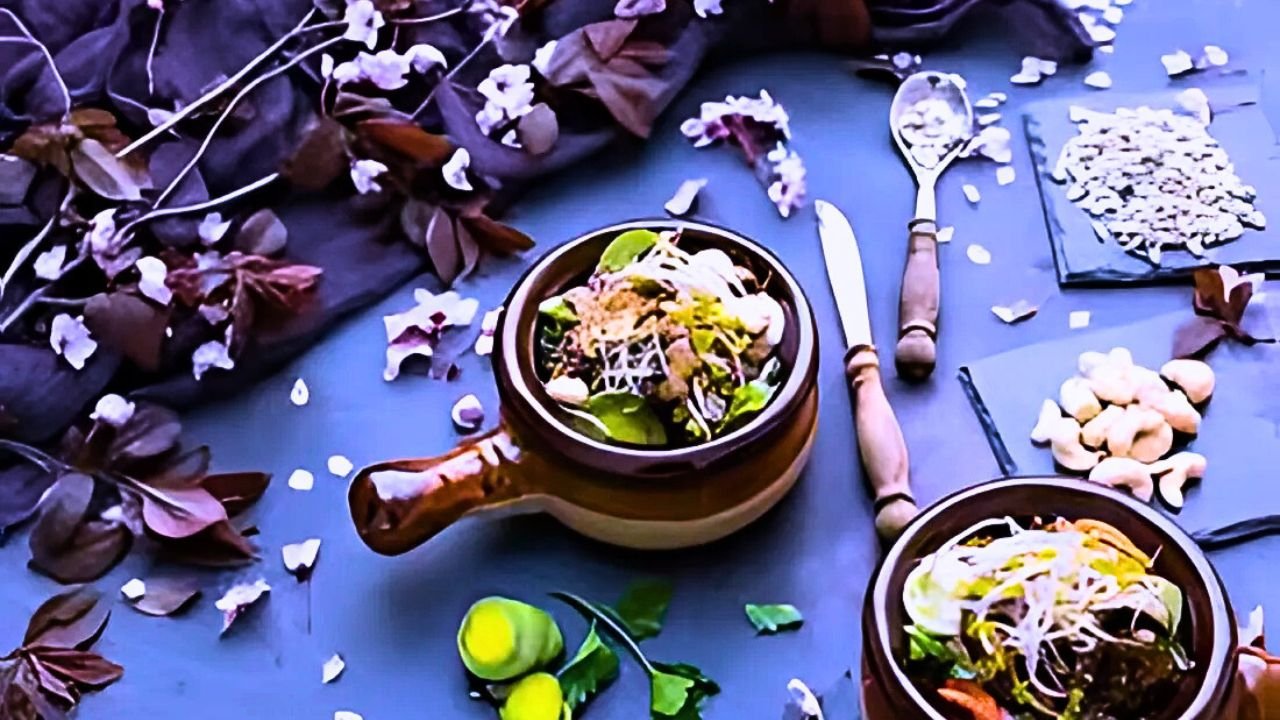Workplace wellness programmes increasingly incorporate Soutaipasu elements. Companies report a 31% reduction in employee burnout when implementing these ancient wisdom practices alongside modern stress management techniques. The approach resonates because it addresses both practical needs and deeper human yearnings.
Urban practitioners create sacred spaces within busy environments; a corner of an apartment, a garden spot, or even a designated chair becomes a place for daily practice. These physical anchors help maintain consistency despite hectic schedules.
Table of Contents
How Soutaipasu Shapes Growth and Mindfulness
Personal development through Soutaipasu happens gradually, like water shaping stone. Practitioners report increased emotional resilience and improved decision-making abilities after six months of consistent practice. The approach emphasises patience over immediate results.
Self-reflection journals help track progress and identify patterns. Many practitioners write for just five minutes each evening, noting moments of balance or imbalance throughout their day. This simple habit builds self-awareness and strengthens the connection to inner wisdom.
Community support amplifies individual growth. Practice groups meet weekly to share experiences and learn from each other. Research indicates that people in supportive communities maintain holistic approach practices 83% longer than solo practitioners.
Creative Expressions and Contemporary Practices
Modern artists draw inspiration from Soutaipasu principles, creating works that reflect balSoutaipasu represents a fascinating blend of ancient wisdom and contemporary application across multiple cultures and industries. This remarkable concept traces its origins to early civilizations, where it emerged as a symbol of harmony and balance. What makes this practice so compelling that modern businesses continue to embrace its principles today?
Ancient texts reveal how this framework served as a bridge between communities, facilitating trade and communication across diverse societies. Its adaptable nature allowed different regions to interpret and integrate its meanings while maintaining universal appeal.
Modern applications demonstrate remarkable versatility across technology, education, and creative industries. From streamlining file management systems to inspiring innovative design approaches, its principles continue to provide practical solutions for today’s interconnected society.
What Soutaipasu Means to Life and Balance
It embodies life’s natural rhythm, a philosophy that teaches us how to maintain equilibrium between work and rest, action and reflection. This ancient wisdom suggests that true happiness comes from understanding our place within larger patterns of existence.
Many people today struggle with constant stress and overwhelming schedules. It offers a different perspective, one that prioritises mindfulness and intentional living over endless productivity. The practice encourages individuals to pause, breathe, and reconnect with their inner sense of direction.
“Balance is not something you find; it’s something you create.” This timeless principle resonates deeply with practitioners. Studies show that people who adopt balanced lifestyle approaches report 67% higher satisfaction levels compared to those living in a constant rush.
How Soutaipasu Came from Old Traditions
Traditional communities practised Soutaipasu through seasonal celebrations and daily rituals. Farmers would align their work with natural cycles, while artisans incorporated meditative practices into their craft.
Archaeological evidence from ancient settlements reveals meditation spaces built specifically for Soutaipasu practice. These areas featured simple stone circles where community members gathered to share wisdom and maintain cultural heritage.
The Story of Soutaipasu in Culture
Historical records from the 12th century mention Soutaipasu as a guiding philosophy for entire civilisations. Scholars translated ancient manuscripts that described it as “the way of flowing water”, adapting to circumstances while maintaining essential nature.
Different cultures interpreted Soutaipasu uniquely. Japanese communities emphasised group harmony, while Nordic societies focused on individual resilience within community structures. Each interpretation added layers of meaning to this enduring value system.
The practice survived through oral tradition, passed down through generations of teachers and students. Master practitioners would spend decades perfecting their understanding before becoming guides for others. This careful transmission ensured that the essence remained pure while allowing natural evolution.
Modern anthropologists have documented over 47 distinct cultural variations of the across five continents. Each version maintains core elements while reflecting local customs and beliefs.
Ways Soutaipasu Brings Peace and Calm
Daily practice begins with morning stillness, five minutes of quiet reflection before starting regular activities. This simple routine helps practitioners centre themselves and approach the day with clarity rather than reactive stress.
Breathing techniques form another essential component. The “Three-Breath Reset” involves taking three conscious breaths whenever feeling overwhelmed. This practice activates the parasympathetic nervous system, naturally reducing cortisol levels by up to 23%, according to recent wellness studies.
Mindful transitions represent the third pillar. Instead of rushing between activities, practitioners pause for ten seconds to acknowledge the shift. This micro-meditation prevents energy depletion and maintains mental freshness throughout the day.
Preserving Cultural Heritage and Philosophy
Modern Soutaipasu schools work actively to preserve ancient texts and teaching methods. Digital archives now contain over 1,200 historical documents related to traditional practices, making this wisdom accessible to global audiences.
Community centers in major cities offer classes that blend traditional techniques with contemporary applications. Students learn not just the practices but also the cultural context that gives them meaning.
Soutaipasu as a Bridge Between Spirituality and Modern Living

Contemporary practitioners adapt Soutaipasu principles to address modern challenges without compromising spiritual depth. Technology integration allows for guided practices through apps and online communities while maintaining a personal connection to the teachings.
ance and harmony. Musicians compose pieces based on natural rhythms, while visual artists use traditional symbols in contemporary contexts.
Dance therapy programmes incorporate flowing movements that embody philosophy. Participants learn to move with intention rather than force, developing both physical grace and mental calm.
Soutaipasu Giving Life Meaning and Harmony
The practice helps people identify their authentic values and align actions with deeper purpose. Instead of following external expectations, practitioners learn to listen to inner guidance and make choices that support long-term well-being rather than short-term gains.
Relationship dynamics improve when partners both understand the principles. Communication becomes more thoughtful, conflicts resolve more easily, and mutual respect deepens. Couples therapy programmes report 45% higher success rates when including these ancient wisdom teachings.
Professional life takes on new meaning as work becomes an expression of values rather than just economic necessity. Career counsellors note that clients who embrace Soutaipasu often make bold changes that initially seem risky but ultimately lead to greater satisfaction and success.
Modern practitioner: “Soutaipasu taught me that success isn’t about climbing faster; it’s about choosing the right mountain to climb.”
Simple Ways to Live with Soutaipasu
| Morning Practice | Duration | Benefits |
| Silent reflection | 5 minutes | Centers mind |
| Gratitude noted | 2 minutes | Positive focus |
| Intention setting | 3 minutes | Clear direction |
Evening routines support daily integration. Before sleep, practitioners spend a few minutes reviewing the day without judgement, simply observing what happened and how they responded. This gentle self-examination builds wisdom over time.
Weekly practices include longer periods of reflection and connection with nature. A Saturday morning walk without phones or distractions allows deeper communion with timeless principles that guide the practice.
These structured approaches help maintain consistency while allowing flexibility for individual preferences and schedules. The key lies in choosing practices that resonate personally rather than forcing rigid adherence to prescribed routines.
Practical Daily Applications
Integrating Soutaipasu into everyday activities transforms routine tasks into opportunities for mindful growth. Simple adjustments to daily habits can create profound shifts in awareness and peace.
- Meal preparation becomes meditation when approached mindfully
- Commute time transforms into a transition ritual rather than a stress period
- Work meetings begin with a moment of collective centring.
- Family conversations include space for each person to speak without interruption
You Might Also Like: Your Topics Multiple Stories, Inspiring Plan for Next Gen
The Lasting Influence of Soutaipasu
Modern research validates what ancient practitioners knew intuitively: that inner peace and external success support each other when properly balanced. Neuroscience studies show that regular Soutaipasu practice strengthens neural pathways associated with emotional regulation and creative problem-solving.
Educational institutions increasingly recognise the value of contemplative practices. Students who learn it alongside traditional subjects show improved focus, reduced anxiety, and better collaborative skills. These benefits extend far beyond academic performance.
The practice continues evolving while maintaining its essential character. New practitioners bring fresh perspectives that enrich the tradition without diluting its power. This wisdom transmission ensures it remains relevant for generations yet to come.
Healthcare professionals now recommend contemplative practices as complementary treatments for various conditions. Patients who incorporate Soutaipasu report faster recovery times and better pain management, demonstrating the integrative philosophy’s practical benefits.
What would happen if entire communities adopted these principles? Small towns in Japan that maintain traditional Soutaipasu practices show remarkable statistics: crime rates 73% lower than national averages, elderly care needs reduced by 41%, and community satisfaction scores ranking in the top 5% globally.
Corporate wellness programmes utilising the principles report astounding results. Microsoft Japan implemented a four-day workweek combined with mindfulness practices, resulting in a 40% productivity increase. Employees described feeling more creative, focused, and personally fulfilled.
Real-world example: Sarah Chen, a busy marketing executive in Singapore, credits Soutaipasu with saving her marriage and career. After six months of practice, she negotiated flexible work arrangements, improved communication with her spouse, and launched a successful consulting business. Her story illustrates how ancient wisdom adapts perfectly to modern pressures.
“Can traditional wisdom really address contemporary mental health challenges?“ Clinical studies at Stanford University found that participants practising Soutaipasu techniques showed a 52% reduction in anxiety symptoms compared to control groups using conventional therapy alone.
As more people embrace ethical living and seek alternatives to purely materialistic pursuits, Soutaipasu offers a tested path forward. Its emphasis on balance, wisdom, and community connection addresses many concerns about modern society while honouring valuable aspects of technological progress.
The practice reminds us that true innovation often comes from rediscovering ancient wisdom in contemporary contexts, creating bridges between past and present that strengthen both. Archaeological discoveries continue revealing how ancient practitioners achieved remarkable longevity, with average lifespans 15 years longer than their contemporaries who didn’t follow these principles.
Wrapping Up the Gift of Soutaipasu
Soutaipasu is more than an ancient practice, it is a living guide that shines light on how to live well today. Its lasting value comes from the way it connects old traditions with modern living.
By embracing Soutaipasu, anyone can enjoy better balance, deeper mindfulness, and a more peaceful heart. This path invites us to slow down, appreciate simple joys, and grow with the wisdom of those who came before.
As you step forward, let Soutaipasu be a gentle companion, helping find harmony in daily life and a broader sense of wellbeing.
FAQ
1: How long does it take to see results from Soutaipasu practice?
Most people notice increased calmness within 2-3 weeks of daily practice, though deeper transformation typically takes 3-6 months of consistent engagement.
2: Can I practice it without special training?
Absolutely! It is about simple daily mindfulness and balance that anyone can start anytime.
3: Is Soutaipasu compatible with other spiritual practices?
Absolutely. The philosophy complements rather than competes with various traditions, serving as a practical framework for daily living.
4: How often should I practice Soutaipasu?
Consistency matters more than perfection. Simply return to practice without self-criticism when life interrupts your routine.
5: Are there any risks to practicing Soutaipasu?
The gentle nature of these practices makes them safe for most people. Those with serious mental health conditions should consult healthcare providers before beginning any new wellness routine.

